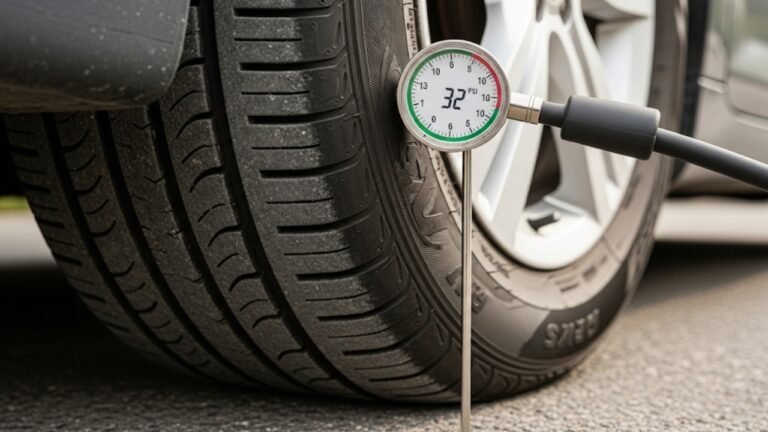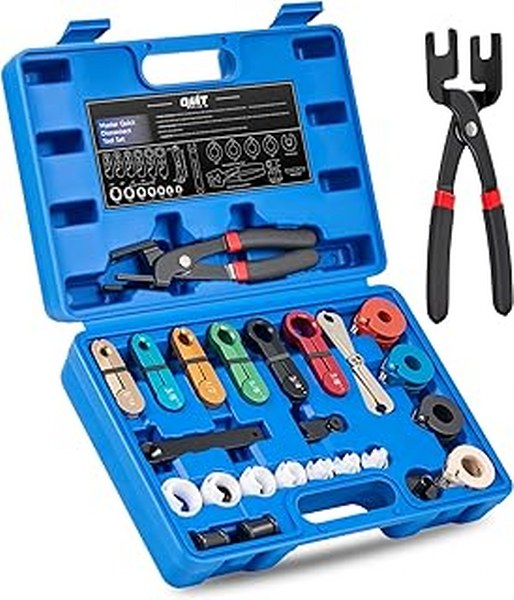How to Remove a Tire: A Step-by-Step Guide

Let’s face it—no one wakes up excited to change a tire. But when life throws a flat your way, knowing how to remove a tire can save your day, your wallet, and sometimes even your safety.
I remember once being stuck on a lonely rural road outside Sylhet. The nearest mechanic? At least 20 kilometers away. My phone? Battery dead. That’s when I realized—I needed to figure it out myself. No YouTube. No help. Just instinct, dusty hands, and an old tire iron my dad had tossed into the trunk “just in case.” That “just in case” moment? Yeah, it found me.
So, if you’ve ever felt nervous about tackling a tire change, or maybe you’re just curious to learn it for your own peace of mind, this guide is for you. I’ll walk you through how to remove a tire step by step, using simple words and a clear tone—like a friend explaining things over tea.
Whether you drive a beat-up hatchback or a shiny SUV, this guide will keep you confident and calm when the rubber meets trouble.
Why You Should Learn How to Remove a Tire Yourself

-
Save Time: Waiting for help can take hours.
-
Save Money: No service call fees or towing.
-
Be Self-Sufficient: You feel empowered when you handle emergencies.
-
Stay Safe: A flat tire in the middle of nowhere is no joke.
And here’s the thing—removing a tire isn’t rocket science. It just takes a little know-how, the right tools, and a bit of patience.
Essential Tools You’ll Need to Remove a Tire
Before we get our hands dirty, let’s talk gear. You don’t need a fancy garage setup to learn how to remove a tire—just a few basics you can easily keep in your trunk.
| Tool | Purpose |
|---|---|
| Jack | Lifts the car to access the tire. |
| Lug Wrench/Tire Iron | Loosens and tightens the lug nuts. |
| Spare Tire | A temporary or full-size replacement. |
| Wheel Wedges | Keeps the car from rolling. |
| Flashlight | For visibility in low light. |
| Gloves (optional) | Keeps your hands clean and protected. |
Bonus: Keep a portable air compressor and a tire pressure gauge in your emergency kit too!
Step-by-Step: How to Remove a Tire Safely
Alright, here’s the moment of truth. You’re on the roadside, maybe a little flustered, and it’s time to act. Deep breath—we’ve got this.
Step 1: Find a Safe Spot to Pull Over
Safety first, always. Don’t stop in the middle of traffic. Turn on your hazard lights and gently pull over to:
-
A wide shoulder
-
A parking lot
-
A flat, firm surface (avoid grass or sand)
If it’s dark, stay in your vehicle with the doors locked until it’s safe.
Step 2: Secure the Vehicle
-
Engage the parking brake.
-
Place wheel wedges behind or in front of the tires opposite the flat one.
-
If you don’t have wedges, large rocks or bricks can work in a pinch.
This keeps the car from rolling once you lift it with the jack.
Step 3: Loosen the Lug Nuts Before Jacking Up the Car
Use your lug wrench to loosen the nuts just enough to break the tension—don’t remove them completely yet.
Pro Tip: Turn counterclockwise to loosen. If they’re stubborn, use your foot (carefully!) to press down on the wrench.
What Happens if the Lug Nuts Won’t Budge?
This is common—rust, over-tightening, or weather can make them stick.
Try this:
-
Apply WD-40 or any penetrating oil.
-
Use a breaker bar or pipe extension over your wrench for more torque.
-
Call for help only if you’ve exhausted all safe options.
Remember: never try to remove lug nuts when the car is already lifted. It can shake the vehicle off the jack.
Step 4: Position the Jack and Raise the Car
Now that the lug nuts are loose, it’s time to lift the car.
-
Place the jack under the vehicle frame near the flat tire. Look for a jack point—usually behind the front wheel or in front of the rear wheel.
-
Use the owner’s manual if you’re unsure where that is.
-
Slowly raise the car until the tire is about 6 inches off the ground.
Safety tip: Never put any part of your body under the car when it’s jacked up.
Step 5: Fully Remove the Lug Nuts and Take Off the Tire
Once the car is lifted:
-
Use the lug wrench to fully unscrew the nuts.
-
Carefully remove them and place them in a safe spot (like inside a hubcap or small bowl).
-
Gently pull the tire straight toward you using both hands.
Sometimes the tire might be stuck due to rust or pressure. In that case:
-
Tap it with your foot (not too hard).
-
Wiggle it side to side.
And there it is—you’ve successfully completed the core steps of how to remove a tire.
When You Might Not Be Able to Remove the Tire
Even with all this, sometimes things just don’t go smoothly.
Here are a few hiccups:
-
Rusted rim: Try spraying lubricant around the hub and waiting a few minutes.
-
Frozen lug nuts: Too cold? Warm the area slightly using friction or heat-safe methods.
-
Wrong tools: If you don’t have a cross wrench or your jack doesn’t fit, you’re stuck.
Moral of the story: always check your toolkit before heading out on long trips.
Step 6: Install the Spare or New Tire (Optional for Removal Process)
Although this guide focuses on how to remove a tire, it’s worth mentioning what to do after.
If you’re replacing it immediately:
-
Line up the holes in the rim with the bolts.
-
Push it on firmly.
-
Hand-tighten the lug nuts before lowering the car.
-
Then tighten with the wrench after lowering.
Helpful Tips to Make Tire Removal Easier in the Future
Let’s future-proof your roadside experience a bit. Some advice from years of road trips, family outings, and impromptu detours:
-
Keep your tools clean and check them every few months.
-
Practice removing a tire in your driveway—yes, seriously! It builds confidence.
-
Use anti-seize compound on the wheel hub when reinstalling to prevent rust sticking.
-
Wear gloves to protect your hands from grime or sharp edges.
Being prepared is half the battle—and honestly, it feels amazing to know you can take care of it yourself.
Common Mistakes People Make When Removing a Tire
Even though learning how to remove a tire is straightforward, mistakes happen—especially under stress or poor weather conditions.
Here are the most common missteps and how to avoid them:
1. Lifting the Car Before Loosening the Lug Nuts
This is a big one. Once the car is off the ground, the wheels spin freely. Trying to loosen tight lug nuts at that point can rock the car dangerously. Always loosen the nuts first—then jack it up.
2. Placing the Jack on the Wrong Spot
Every car has specific jack points. Placing the jack under a weak part of the frame can damage your car—or worse, cause it to collapse. If unsure, check the owner’s manual.
3. Losing the Lug Nuts
In the heat of the moment, it’s easy to misplace them. Pro tip: Place them in the hubcap or a small container so they don’t roll away.
4. Overtightening When Reinstalling
When you reinstall the tire, overtightening can damage threads or warp the brake rotor. Instead, tighten in a star pattern and torque them evenly.
Tire Removal in Different Scenarios
Sometimes, the context changes everything. Let’s look at a few special cases where knowing how to remove a tire needs a little adjustment.
Removing a Tire from an Alloy Rim
Alloy wheels can get stuck due to corrosion. If this happens:
-
Loosen the lug nuts slightly.
-
Lower the car so the tire touches the ground.
-
Rock the car gently by pushing or driving forward a foot.
-
Raise it again and try pulling it off.
Removing a Tire in the Rain or Snow
Cold hands and wet tools can be frustrating.
-
Wear waterproof gloves.
-
Use a rubber mat or thick plastic bag to kneel on.
-
Keep a bright LED flashlight for better visibility.
Flat Tire on a Slope
If you’re on an incline:
-
Place wheel chocks both front and back of the tire on the opposite side.
-
Never turn your back on the car—stability is everything.
-
If it feels unsafe, wait for roadside help.
Real-Life Story: My First Time Removing a Tire
Let me share a quick story.
I was 19, driving my mom’s old Toyota Corolla. I’d just finished a long university exam and was heading home in pouring rain. About 10 minutes in, I heard the dreaded thump-thump-thump. Flat tire. Middle of nowhere. I had no idea how to remove a tire. I didn’t even know where the jack was!
But guess what? I called my cousin on speakerphone. She walked me through it, step by step. I ended up drenched but victorious—and I’ll never forget that feeling of “I did it myself.”
Point is: You don’t have to be perfect. You just have to be willing to try.
Tire Maintenance Tips to Prevent Getting Stranded
Prevention is better than panic. A little regular care goes a long way.
-
Check air pressure every 2 weeks.
-
Look for uneven wear—it may signal alignment issues.
-
Rotate your tires every 6,000–8,000 miles.
-
Replace old or cracked tires even if they still have tread.
-
Keep your spare tire inflated. A flat spare is useless!
FAQs About How to Remove a Tire
1. Can I remove a tire without a jack?
It’s technically possible using ramps or heavy-duty lifts, but never recommended in emergencies. Always use a proper jack for safety.
2. How long does it take to remove a tire?
With practice, 15–20 minutes tops. First-timers might take 30–40 minutes. Don’t rush. Safety > speed.
3. Do all cars have the same lug nut pattern?
Nope! While the process is similar, the number and pattern of lug nuts vary. Always use the right wrench size.
4. What’s the difference between a donut and a full-size spare?
-
A donut is a temporary spare—smaller, lighter, meant for short distances.
-
A full-size spare is like your regular tires and can be driven normally.
5. Can I drive with a missing lug nut?
Not for long. It’s unsafe. Replace the missing nut ASAP and avoid high speeds or long trips until then.
6. How do I know if the tire is stuck because of rust?
If you’ve removed all lug nuts and the tire still won’t budge, it’s likely stuck due to rust or corrosion. Try kicking gently or tapping with a rubber mallet.
7. Should I use an electric impact wrench?
If you’re comfortable and know how to control torque—sure. But manual tools give better feedback and control, especially for beginners.
8. Can I reuse the same tire after removing it?
If the tire isn’t damaged (just a flat), and you patch or repair it properly, yes. However, inspect the tread and sidewalls before reinstallation.
Final Thoughts: You’ve Got This
Learning how to remove a tire isn’t just a car skill—it’s a life skill. It builds independence, confidence, and peace of mind. You won’t always need it, but when you do, you’ll be ready.
Flat tires don’t care about your schedule. They don’t wait for sunshine or city roads. They happen in storms, on hills, or right when you’re rushing to a meeting. But with the right mindset and this guide by your side, you’ll handle it like a pro.
So the next time you hear that soft hiss or sudden pop—don’t panic. You know exactly what to do. Your hands might get dirty, but your heart? It’ll be full of pride.




